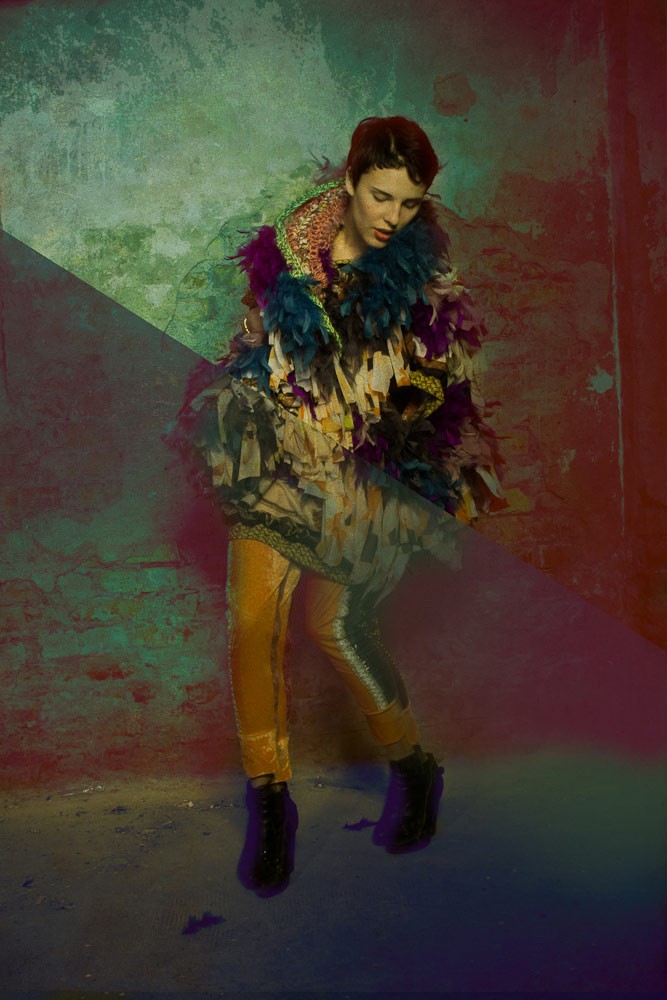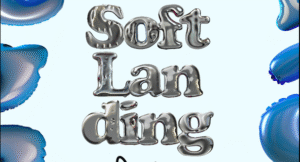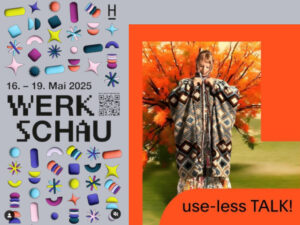Chromatic Rituals: On the Emotional Power of Color in Art and Fashion Installation
There is a language that precedes words. It begins in the body, travels through memory, and lingers on the skin. It is the language of color.
At Tata Christiane, we have long treated color not as decoration but as substance—living, moving, speaking. Our latest installation project, Emotional Landscapes – A Chromatic Ritual in Upcycling, continues this commitment. Inspired by the chakra system, the philosophy of La vie des formes by Emanuele Coccia and Alessandro Michele, and a decade-long material dialogue with knit artist Cécile Feilchenfeldt, we’re exploring color as an emotional and spiritual terrain. This work forms part of our broader practice of Chromatic Rituals.
Each garment in this series becomes a monochrome landscape—dedicated to one chakra hue, from grounding reds to transcendent violets. These are not fashion items in the usual sense. They are meditations. Sculptures. Psychic residues made of 3D crochet, creative patchwork, and gifted textile remnants. We let the randomness of upcycling lead us, trusting that what color emerges is what is meant to be felt.
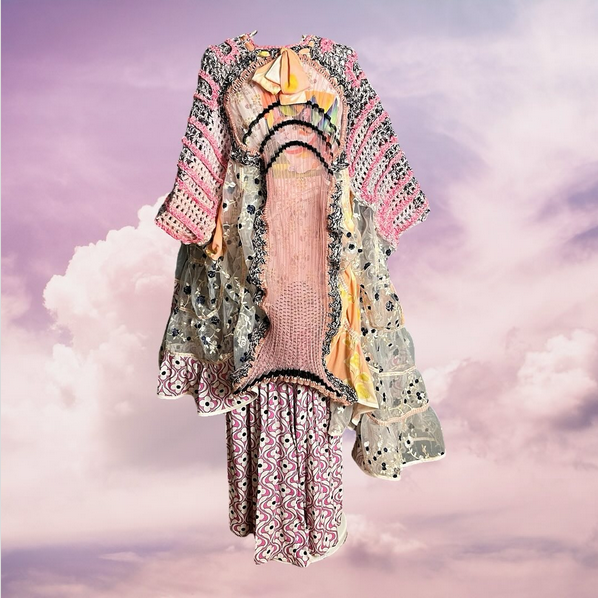
Color as Spirit
In La vie des formes, Coccia and Michele remind us that garments are not mere surfaces. They are portals—amulets—through which we inhabit other lives, histories, selves. Color, in this cosmology, is not accessory. It is essence. Each hue resonates with energy, memory, sentiment.
Upcycling, by its very nature, engages intimately with color’s unpredictability and abundance. The process often involves working with a diverse array of discarded materials, each bearing its own history and chromatic identity. This randomness presents both a challenge and an opportunity: to harmonize disparate elements into a cohesive narrative.
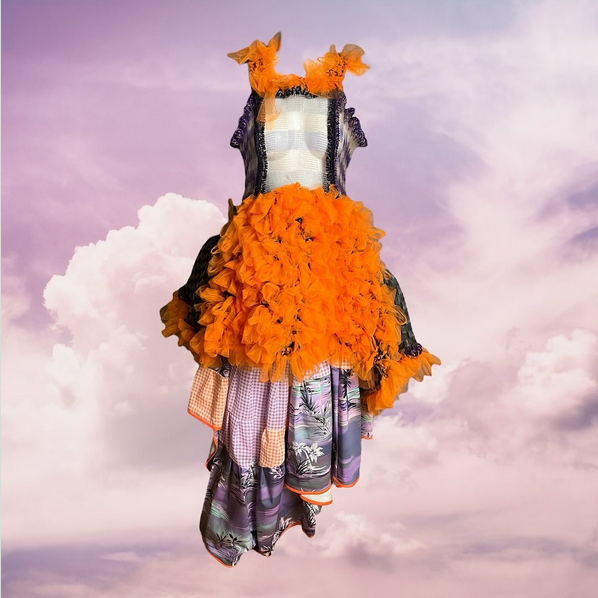
As highlighted in this sustainability study, designers working with post-consumer waste encounter a wide spectrum of multicolored materials—each textile fragment acting as a visual remnant of another time. Textile artist Julie Peppito describes this as a “philosophy of chance,” where the design process becomes a conversation with the material itself, guided by color, memory, and intuition.
Such practices underscore that upcycling is not merely an ecological gesture but a philosophical one—a reflection on color’s chaos, on the fragments we inherit, and on how we compose meaning from what remains. Chromatic Rituals live at this intersection of chance and intention.
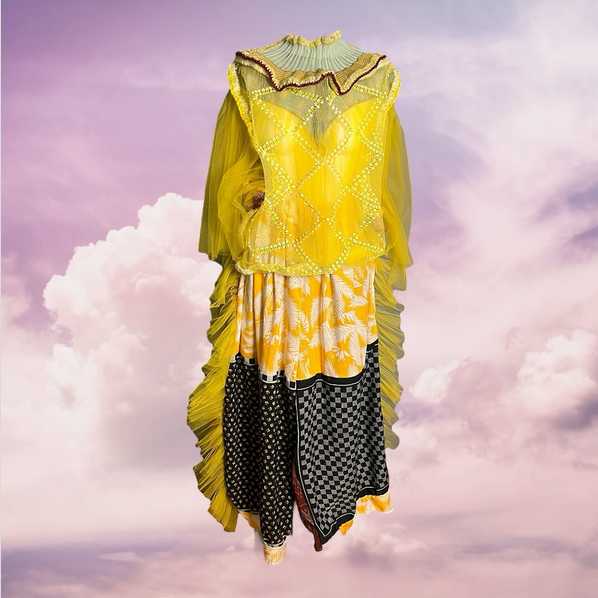
This vision aligns naturally with chakra philosophy: the ancient mapping of the body’s energetic centers through color. From the red of survival to the indigo of intuition, each shade in this system is not arbitrary—it is charged. To wear a color is to activate its field. To dress becomes a ritual of alignment.
Floating Fragments: A Textile Topography
In Emotional Landscapes & Chromatic Rituals, the silhouettes are not worn, but witnessed. Instead of dressing mannequins, we allow each piece to float freely in space—suspended like fragments of memory or emotion. Each garment becomes a point on an invisible map, a chromatic marker in a shared emotional geography.
This installation invites the viewer not only to observe, but to project. To see themselves reflected—softly, abstractly—in the space between the forms. These are not bodies, but thresholds. Not costumes, but carriers of feeling.
In their stillness, the garments become mirrors. In their color, portals. The silhouette no longer confines, but radiates—and the visitor becomes part of the ritual, part of the landscape. This subtle witnessing is at the heart of Chromatic Rituals.
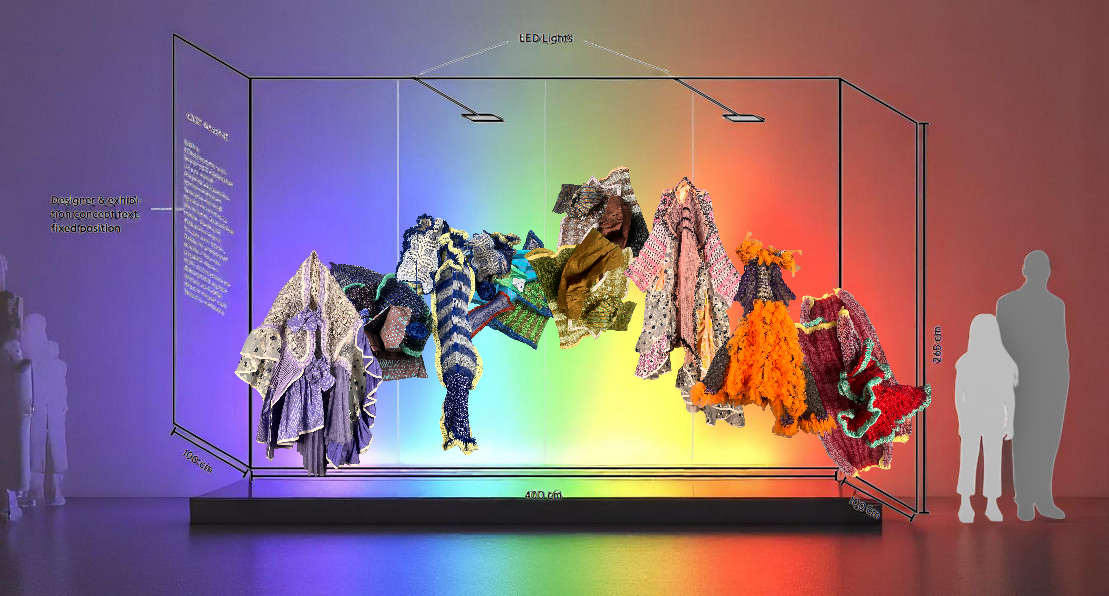
Maximalism as Ethics
We live in an era where fashion is often asked to disappear—into beige, into minimalism, into fast, forgettable gestures. Against this, our use of color is a form of resistance. Maximalism, for us, is not indulgence. It is care. It is time. It is labor.
Maximalism in sustainable fashion—often called “conscious maximalism”—challenges the outdated idea that ethical fashion must be austere or muted. It embraces vivid hues, eclectic layering, and rich textures while staying rooted in responsibility. It is a kind of Chromatic Ritual.
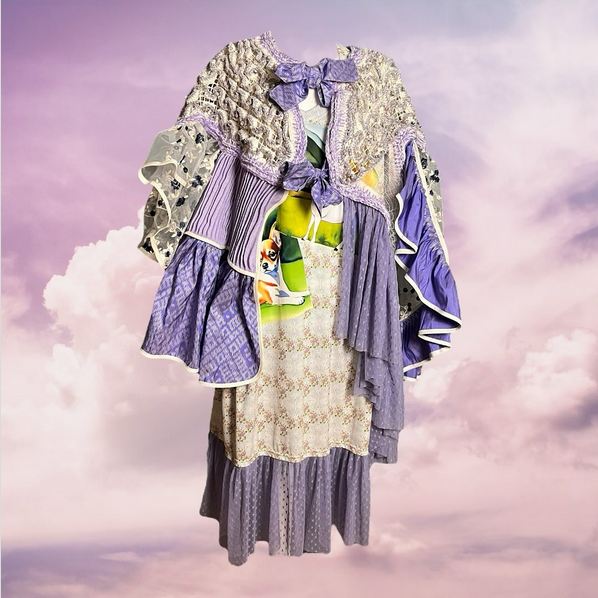
Designers like Mina Perhonen, the Japanese label founded by Akira Minagawa, offer a poetic alternative. Their work interlaces storytelling with textile experimentation, using intricate embroidery, print, and patchwork to evoke joy, memory, and wonder. Deeply rooted in slow production, each piece carries the mark of time and tenderness—resisting trends and cultivating emotional longevity.
In our own practice, maximalism is a way to honor the fragment, the scrap, the thread that might otherwise be lost. It allows space for emotion to be visible—joy, rage, tenderness, memory—all stitched into the fabric. This method is the fabric of our Chromatic Rituals.
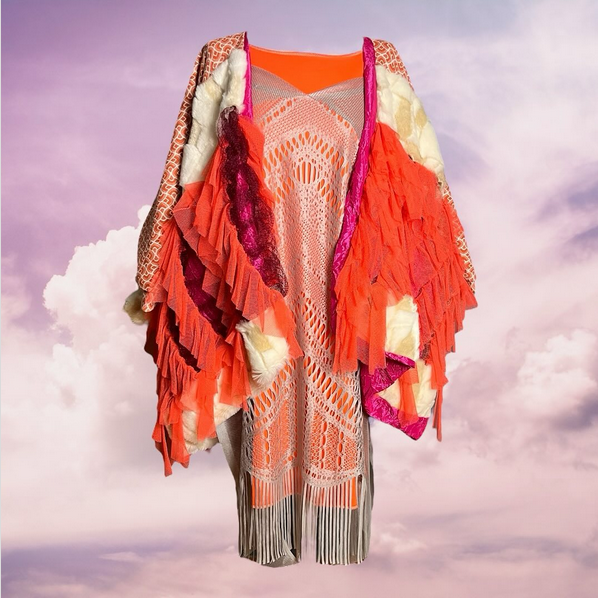
Color as Architecture: The Inspiration of Emmanuelle Moureaux
One of the most inspiring visual references for Emotional Landscapes has been the chromatic architecture of Emmanuelle Moureaux. A French architect and designer based in Tokyo, Moureaux has developed a profound language of space through color. Her installation series 100 Colors invites viewers into suspended forests of hue—fields of paper, light, and silence that dissolve the boundary between sculpture and environment.
In her CFCL collaboration, Moureaux transforms space into a living prism. Transparent garments are hung within vertical layers of color, creating not only a spatial but emotional transition. Visitors are not passive viewers—they walk into color, become surrounded by it, dissolved within it. The installation becomes a threshold, a chromatic womb.
This experiential approach echoes our intention with Emotional Landscapes—to invite viewers into color not just visually, but physically, emotionally, psychically. To allow garments to define space. To make color a medium for encounter, not just ornament. This too is part of our Chromatic Rituals.

A Moodboard of Spirit
This installation is part of a wider chromatic conversation. From the geometric spiritual couture of threeASFOUR to the light-diffused architectures of Kimsooja, from chakra-coded paintings by Beth Ames Swartz to the luminous silence of Emmanuelle Moureaux’s color forests—artists around the world are turning to color not as style but as message. As presence. As soul. Their practices echo our own Chromatic Rituals.
By choosing chakra colors, we also invite reflection—not only on aesthetics, but on our own consumption. When a garment resonates emotionally, it becomes harder to discard. It holds a vibration, a memory, a sense of personal alignment.
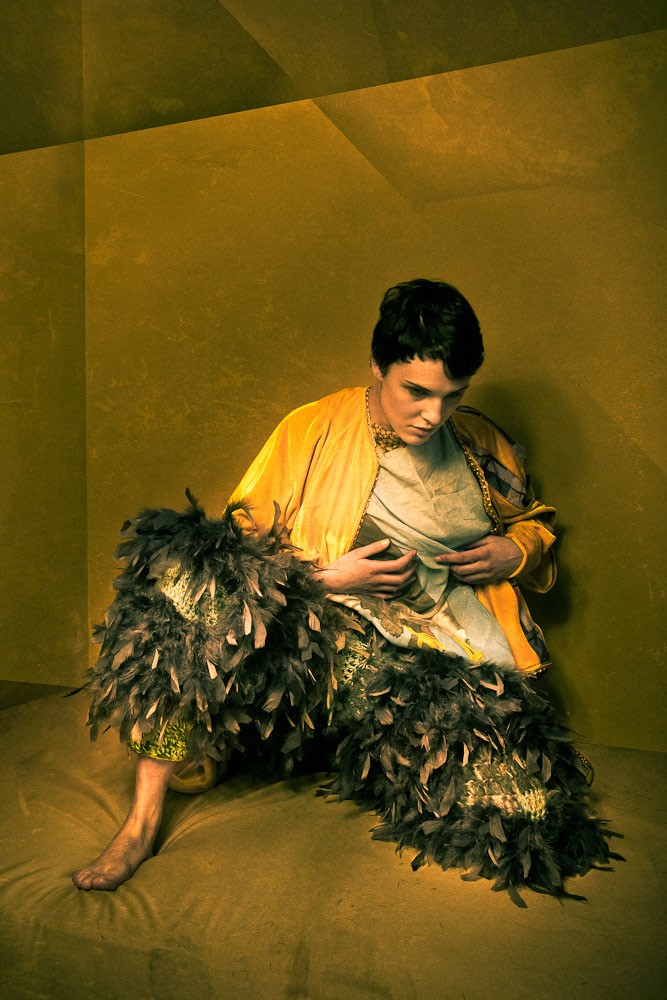
As Première Vision highlights, the concept of emotional durability is a powerful counter to fast fashion. Clothing that speaks to us—through story, feeling, or color—resists disposability. It becomes a companion, not a trend.
By enhancing the power of color, we call forth joy, presence, spiritual grounding, and even humor. In doing so, we ask ourselves—and those who encounter our work—to consider fashion as more than a purchase. To see it as a practice. A moment of connection. Daily Chromatic Rituals of meaning.

Conclusion: To Dress is to Feel
Color is not neutral. It is not polite. It is not quiet. It is joy, fear, intimacy, transformation.
To make with color is to tell stories before we speak. To dress in color is to become a vessel for energy—ancestral, emotional, spiritual.
As we continue this work, we invite you to tune in to the vibrations of what you wear, to the silence between stitches, to the resonance of red, orange, yellow, green, blue, indigo, violet.
Because fashion, at its most sacred, is not about appearance.
It is about remembering how to feel.
It is about continuing the practice of Chromatic Rituals.
